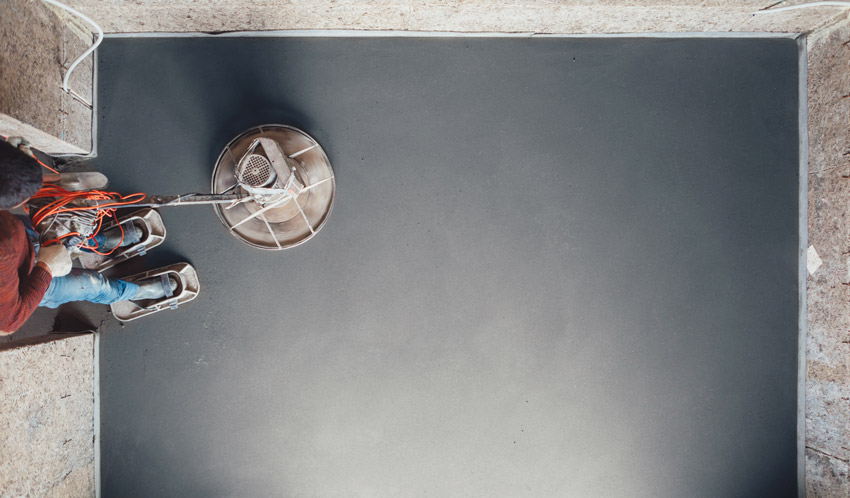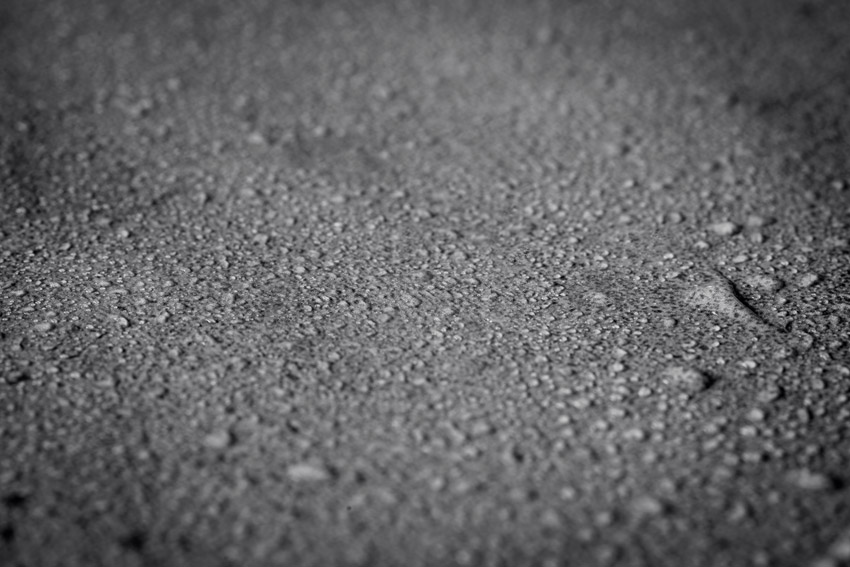Preparing Concrete for Resilient Floor Installations
Learning Objectives:
- Identify the issues related to moisture and water in regard to installing resilient flooring over concrete floor slabs.
- Investigate the recognized standards for the construction of concrete floor slabs and the installation of resilient flooring over them.
- Assess the options available for providing moisture and vapor control between concrete slabs and resilient flooring.
- Recognize best practices related to the coordination of concrete construction and the installation of resilient flooring.
Credits:
Approved for Core Learning
This course can be self-reported to the NLAA
Course may qualify for Learning Hours with NWTAA
Course eligible for OAA Learning Hours
This course is approved as a core course
This course can be self-reported for Learning Units to the Architectural Institute of British Columbia
Resilient flooring is often installed over concrete, whether on a slab on grade or an elevated concrete floor. That concrete can provide a smooth, durable, and desirable substrate for the finish flooring, but there are inherent concerns related to the quality of the surface and the presence of moisture or water vapor within or migrating through the concrete. Hence, the flooring industry has worked together with the concrete industry to identify ways to address and overcome these concerns so that finished floors can be properly installed. This ensures that the floors qualify for warranties, remain durable over time, are safe to walk on, and have an attractive aesthetic. Accordingly, this course will look at some of the basic issues, testing standards, and technical points to incorporate into project designs and specifications for the preparation of concrete before any resilient flooring is installed.

All photos courtesy of nora
Proper preparation of concrete floors is critical to the successful installation of resilient flooring placed on top of the concrete.
The Primary Issue: Water and Vapor Movement
In order to understand the nature of the issues that resilient flooring over concrete can create, we first need to be clear on the specific sources of water and the nature of the problems it causes.
Water Sources
There are two common sources of water in concrete slabs. The first is found inside the concrete itself in the form of residual water and moisture within the concrete mix. Concrete slabs are poured in place in the field, meaning that they are subject to variation in makeup, differences in weather and temperature conditions, and differences in the quality produced by tradespeople on the job site. All of that means that the amount of water introduced into the concrete mixture itself could be just right, too little, or too much. Slump tests are used to determine anticipated strength based on the ratio of water to other ingredients, but they don’t tell the whole story. In particular, there is a focus on the concrete curing to the specified strengths, typically by 7 and 28 days following the pour. Hence, the amount of water that is used to chemically interact with the other ingredients is important in predicting and achieving those strengths. In many cases, though, the needed strength can be achieved within a range in the amount of water used with safety factors often built in. From a flooring standpoint, keeping the amount of water on the lower end of that range is preferable.
Once the concrete is cured and achieves its full potential strength and durability, there is likely still residual water in the concrete. That is another way of saying that there is a definitive difference between the amount of water required for curing concrete and the amount suitable for achieving a “dry” condition in regard to moisture content. The criteria for each can be very different. Hence, if flooring is simply installed placed on a “cured” slab but the concrete it is not “dry,” then there is residual moisture in the slab that can interfere with a successful flooring installation.
The second source of moisture can come from outside of the slab, such as in a slab-on-grade condition. Concrete is a porous material due to the normally occurring tiny (even microscopic) voids and openings in the makeup of cured concrete. Water that exists outside of the slab, such as occurs naturally in the ground, will follow the laws of physics and seep, wick, or otherwise simply migrate into and through the concrete slab. In order to stop that moisture transfer, a continuous layer of a material that will prevent or at least slow the moisture movement is needed. If a material can be shown to stop virtually all vapor, then it can be called a true vapor barrier. In many cases, however, the material still has some porosity and is simply a vapor retarder. Hence, it is important to know which type of product is needed or considered acceptable when dealing with a slab-on-grade construction and resilient flooring.

Moisture and bulk water that gets trapped between the concrete subfloor and the finished resilient flooring can cause a range of problems and issues with the floor.
The Problems
Bulk water and vapor in floors has been studied by professional and industry experts since the early 1950s. As such, the effect on floor coverings from residual moisture in concrete slabs or moisture passing through concrete slabs from underlying soil has become understood and well documented. Leading some of that effort has been the Resilient Manufacturers Association (RMA), which, among other things, has provided research and documentation widely adopted by the flooring industry.
The presence of water anywhere brings with it the characteristics and capabilities to dissolve, interact with, or deteriorate other materials. When moisture emanates from or through a concrete slab and then gets trapped between the concrete and the resilient flooring, there are several common adverse impacts that can occur.
- Adhesive failure: Some flooring adhesives are soluble in water, therefore the presence even of water vapor will weaken the bond between the flooring and the concrete. That can produce floor tiles that become loose and pop or slide out of place. Similarly it can cause adhered sheet flooring to move, buckle, or otherwise deform.
- Spalling and cratering: Water on the surface of concrete surfaces can degrade the surface over time. As moisture emits from or passes through a slab, it can carry with it alkaline salts from the ground or the concrete itself, which are left behind as the water evaporates. The vapor from salt-bearing groundwater is technically incapable of carrying salts through the concrete, but it has been found that alkaline salt can build up cyclically at the top of the slab due to chemically pure vapor attracting salts through osmosis. These salts then create the damage to the concrete surface by chemically interacting with the concrete. With a damaged concrete surface, imperfections, voids, and irregularities occur beneath the flooring and telegraph through it. Besides being unsightly, such conditions can be hazardous if they cause people walking on the floor to trip and fall.
- Fungal growth and odors: Water promotes organic life, which is good when that is desired. But in construction assemblies, including floors, keeping organic growths away, or at least in check, is needed. In flooring, trapped water or moisture can build up and find some organic material in the flooring or adhesive and cause fungus or mold to grow. Different types of such mold have been attributed to causing a number of health concerns, including allergic and respiratory reactions. Similarly, organic growth under a resilient floor can produce unpleasant smells or odors and reduce the desirability of the building for use.
There are certainly other potential problems with moisture trapped under resilient flooring, but these are the main ones cited by those who have studied the condition. With all of the above in mind, we can turn our attention to the standards and best practices that help overcome some of these challenges and problems in construction.













